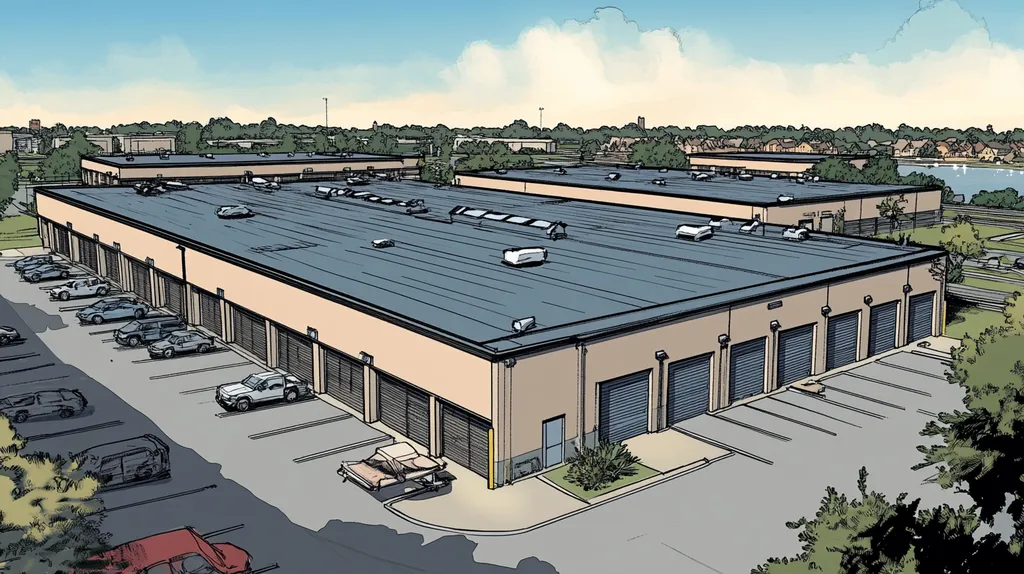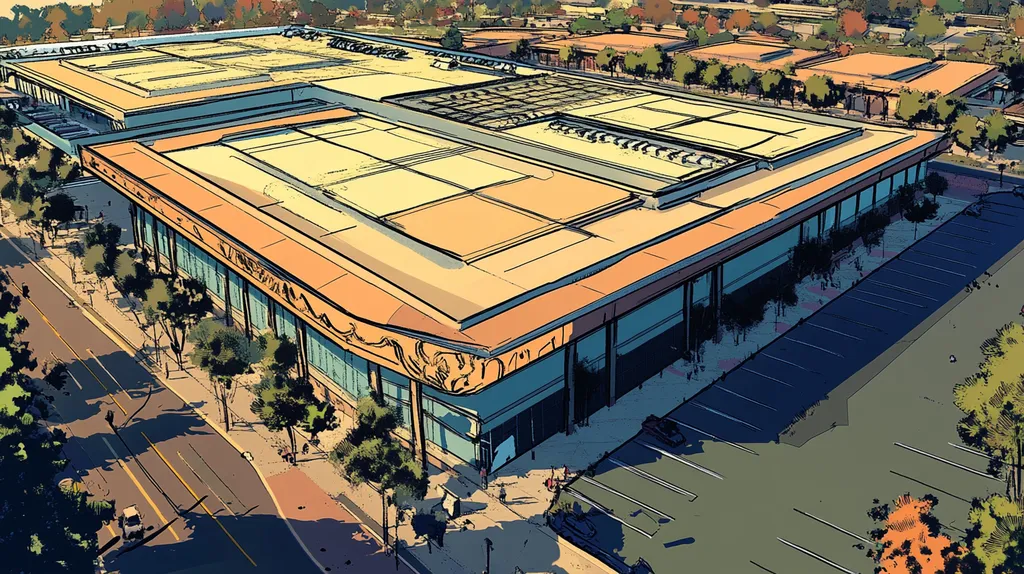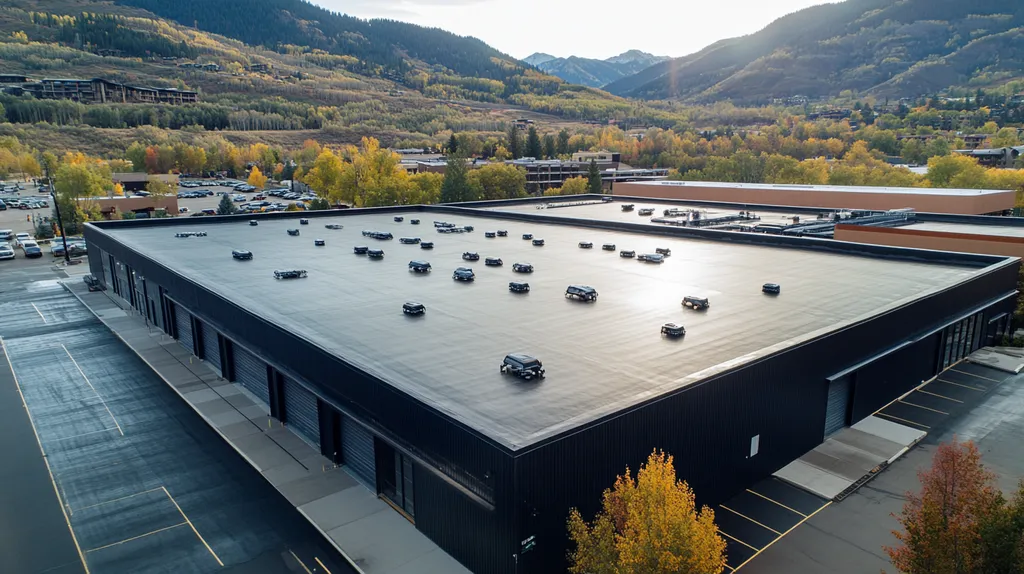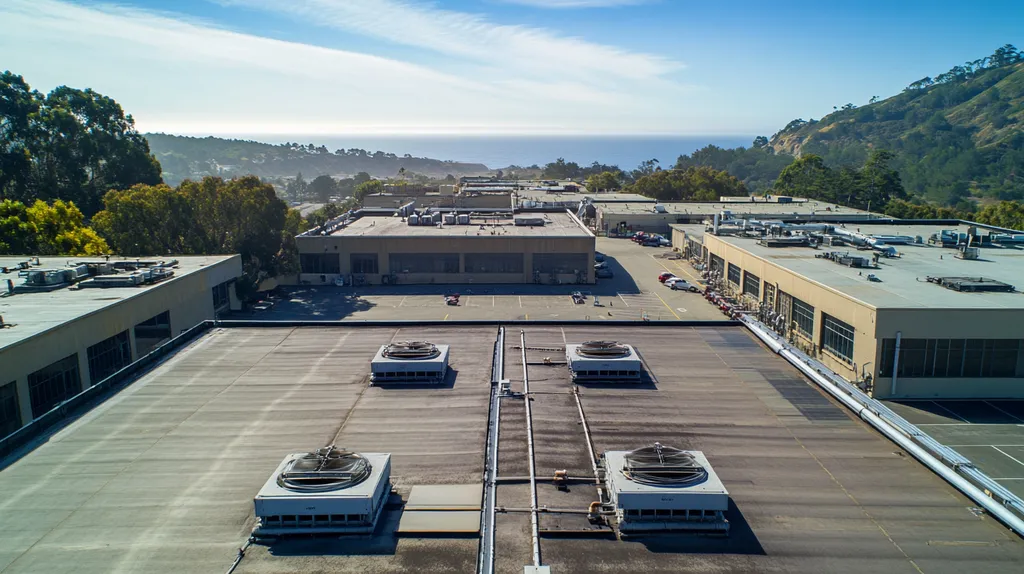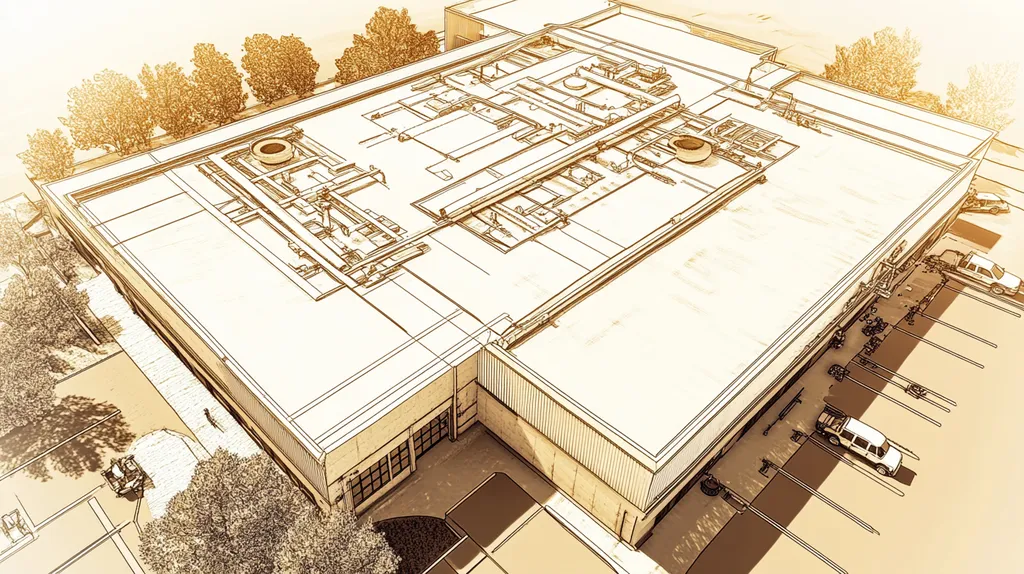In the complex world of commercial roofing, misunderstandings about industry standards can lead to catastrophic failures, with studies showing up to 40% of roof coating projects fail prematurely due to improper material selection.
From outdated specifications to mismatched climate requirements, the maze of roofing standards leaves many property owners vulnerable to costly mistakes.
This comprehensive guide cuts through common myths about roof coatings, exploring how evolving industry standards impact durability, maintenance costs, and long-term building performance.
SECTION 1: COMMON MISCONCEPTIONS
Misconceptions about roof coatings pose serious challenges in the commercial roofing sector. Many property owners and facility managers mistakenly assume that all roof coatings adhere to the same industry standards, potentially leading to performance issues and compliance troubles. For instance, selecting the wrong type of coating can result in significant repair costs and even legal complications tied to building regulations. It’s crucial to understand these misconceptions to make informed decisions that safeguard valuable investments.
All Roof Coatings Meet the Same Standards
A common misconception is the belief that all roof coatings are created equal. In reality, each type is engineered to meet specific industry standards, such as ASTM or UL certifications. For example, a coating formulated for elastomeric roofs may not perform effectively on metal surfaces, which can lead to costly early failures.
Choosing the wrong coating based on this fallacy can severely undermine a roof’s weather resistance and durability. Additionally, coatings that lack certification may not offer the protection required by local building codes, exposing property owners to liability issues when problems arise.
Moreover, not all manufacturers prioritize safety and performance best practices. It’s essential for property owners to research each product thoroughly and confirm its compliance with relevant standards in order to mitigate risks associated with their roofing decisions.
Ultimately, recognizing that not all roof coatings meet the same standards can help prevent expensive mistakes. Property owners should rely on credible information to select coatings tailored to their specific roofing requirements.
Low Temperature Flexibility is Always Necessary
Another prevalent myth is the belief that low-temperature flexibility is a crucial feature for all roof coatings. While this property is essential in some colder regions, it’s not universally required for every climate or application. For instance, coatings that remain rigid may work just fine in warmer areas.
This misunderstanding can lead property owners to overspend on features that don’t enhance performance within their unique environment. In many cases, a standard coating without flexible properties may be entirely adequate, resulting in lower costs and simpler application.
Furthermore, flexibility can sometimes compromise other beneficial characteristics. A highly flexible coating may lack the same level of UV resistance or adhesion as a more rigid alternative. Thus, evaluating your specific climate and conditions is crucial to determine the actual needs for roof coatings.
Thus, assuming that low-temperature flexibility is a universal requirement can lead to wasted resources and misalignment of project goals with actual needs.
Old Standards Are Still Relevant Today
Finally, there’s a common pitfall in assuming that older industry standards are still valid. While historical standards laid the groundwork for today’s practices, advancements in technology and materials have rendered some of these standards outdated. For instance, products that once met initial qualifications might not stand up to today’s environmental challenges.
Continuing to reference old standards can result in using obsolete products that fail to meet modern performance expectations. Consequently, property managers may face higher maintenance costs and operational challenges sooner than anticipated.
Moreover, manufacturers are constantly innovating to meet newer standards, often yielding improvements in sustainability and energy efficiency. By neglecting updated certifications, property owners risk missing vital features that could enhance long-term asset value.
In summary, relying on outdated standards can severely limit a roofing project’s potential, jeopardizing safety, compliance, and financial investment.
SECTION 2: PRACTICAL IMPLICATIONS
The selection of roof coatings isn’t just a minor detail; it can make or break a building’s longevity and efficiency. A poor choice might lead to costly premature failures, soaring maintenance expenses, and reduced energy efficiency. In fact, research shows that as many as 30% of commercial roofs fail to perform optimally due to inappropriate coating selections. Understanding these implications is crucial for property owners and facility managers aiming to maximize their investments and maintain operational efficiency.
Impact on Roof Coating Performance
The performance of roof coatings is pivotal in determining a roof’s durability and lifespan. If a coating doesn’t meet industry standards, the roof may become vulnerable to leaks and harsh weather conditions. Coatings lacking proper elasticity, for instance, can crack with temperature changes, leading to water damage and costly repairs.
Furthermore, coatings that fall short of compliance often face adhesion problems, making it essential to select products that meet or exceed standards set by organizations like ASTM. This savvy choice could extend a roof’s life from 10 years to 20.
Staying updated on performance standards allows property managers to dodge hefty repair bills resulting from early roof failures. Careful selection of coatings can enhance resilience against all sorts of environmental stressors.
Ultimately, opting for compliant roof coatings not only ensures better installation and long-lasting performance, but also protects investments and minimizes downtime for repairs.
Effects on Maintenance and Repairs
The right roof coating can transform maintenance schedules and repair needs for any facility. Coatings that adhere to established standards significantly reduce problems like blistering or peeling, which otherwise lead to expensive repairs. Using subpar products can double the frequency of needed repairs, straining budgets and interrupting daily operations.
For instance, a facility with a non-compliant coating might find itself making frequent repair calls, while a compliant alternative promotes a framework for a more predictable maintenance cycle. By managing repairs proactively, facility managers can tackle minor issues before they snowball into major headaches.
Streamlined maintenance practices enable organizations to allocate resources effectively, boosting overall operational efficiency and extending the life of the roof.
Influence on Energy Efficiency
Energy efficiency is at the forefront of concerns for commercial property owners, especially amid rising utility costs. The choice of roof coatings is crucial in managing building temperatures. Reflective coatings that meet Energy Star standards can cut cooling expenses by as much as 30% during those sizzling summer months.
By employing compliant coatings, property owners not only trim down energy bills but also align with sustainability initiatives. Buildings decked out with energy-efficient roofs are increasingly appealing to eco-minded tenants and investors.
Selecting the right roof coatings can also help diminish the heat island effect; lighter, reflective coatings contribute positively to our environment by cooling urban areas. This approach offers long-term savings while also showcasing a commitment to environmental responsibility.
In a nutshell, incorporating energy-efficient coatings is essential not just for saving money but also for enhancing tenant satisfaction and bolstering return on investment.
SECTION 3: COST OF MISINFORMATION
The financial repercussions of sticking with outdated roofing standards can be hefty. Research indicates that property owners who opt for subpar roofing materials may incur up to 30% higher maintenance costs over their roof’s lifespan. This highlights the critical importance of making roofing choices based on the latest standards; misinformation can result in costly errors. The sections below delve into how outdated practices can wreak havoc on budgets, lead to escalating maintenance needs, and ultimately shorten roof lifespan.
Financial Consequences of Outdated Standards
Ignoring updated roofing standards can jeopardize a property’s financial stability. Property owners who choose unverified materials might be trading quality for cheaper initial costs, opening the door to substantial repair bills that could have been avoided by adhering to current standards.
These financial burdens extend beyond unexpected repairs. Higher insurance premiums often come into play, as insurers increasingly evaluate roofing choices against modern performance criteria. This scrutiny can drive costs up for those who don’t stay current.
Moreover, the resale value of a property can take a hit if roofing systems fail prematurely. Savvy buyers today are well-informed about roofing standards and may be reluctant to invest in properties that employ questionable materials.
Consequently, the short-term savings from opting for outdated roofing can pave the way for rising expenses, drastically affecting a property’s overall profitability.
Increased Maintenance and Repair Costs
The fallout from misinformation creates long-lasting consequences, sparking heightened maintenance expenses down the road. Property owners caught in this trap often find themselves in an endless loop of repairs, as older roofing systems start to deteriorate faster than anticipated.
Studies reveal that properties using non-compliant coatings suffer from the damaging effects of UV exposure. This can lead to issues such as leaks or structural degradation, which demand costly routine inspections and repairs that eat into budgets.
Additionally, repairs made with outdated materials may not hold up, requiring more frequent interventions than expected. Each service call adds to the financial burden, making what could be a straightforward maintenance plan a source of frustration.
In essence, misinformation can turn a manageable maintenance schedule into a costly saga, leaving property owners feeling overwhelmed by their investments.
Potential for Premature Roof Failure
The most alarming consequence of misinformation is the stark possibility of premature roof failure. Roofing systems installed with outdated materials or methods might not effectively handle environmental stressors, leading to a complete roof replacement much sooner than planned.
For instance, while a compliant roof coating is designed to last 10-15 years, a subpar one may deteriorate within just 5 years. Such failures can disrupt business operations significantly, often necessitating emergency repairs that threaten both financial and operational stability.
Moreover, the potential for leaks or structural problems poses serious safety risks. Facility managers must factor in these hidden costs when they sidestep updated roofing industry standards.
Ultimately, the threat of premature failures can drain the return on investment for property owners and create substantial liabilities for facility managers, making it essential to prioritize current industry standards.
SECTION 4: REALITY CHECK
The stakes couldn’t be higher when it comes to choosing the right roof coating. A recent study highlights that the wrong selection can cost property owners up to 20% more in long-term maintenance. To navigate this critical decision, grasping the evolution of roof coating technologies, understanding regional climate needs, and staying current with modern industry standards is essential for commercial property owners and facility managers. This section dives into these crucial factors to ensure smart roofing choices.
Evolution of Roof Coating Technologies
Roof coating technology has come a long way in just a couple of decades. Early products often lacked the durability needed for long-term performance, leaving property owners facing frequent repair bills. Today, modern coatings utilize advanced formulations, significantly boosting their strength, flexibility, and wear resistance.
Take silicone and acrylic coatings, for instance; they have become favorites due to their exceptional UV protection and weather resilience. These innovative formulations not only extend the lifespan of roofs but also enhance energy efficiency, helping to cut utility costs. Ignoring these advancements could mean businesses are left with mounting expenses in the long run.
Additionally, new application techniques have emerged, leading to reduced labor costs and shorter project times. Spray-applied coatings enable quicker and more even coverage, especially on complex roof shapes. Failing to embrace these modern methods could put companies at a disadvantage in a competitive market.
For property owners, staying attuned to these technological advancements is vital for securing lasting roof solutions. Selecting outdated products can lead to financial liabilities stemming from premature roof failures.
Regional Variations in Climate Requirements
Regional climate plays a pivotal role in roof coating performance. Coastal property owners face unique challenges, such as salt corrosion and high humidity, while those in arid locations contend with severe UV exposure. Each environment necessitates tailored coating solutions to withstand specific stresses.
In places like Florida, for example, coatings must handle extreme heat and humidity, factors that can significantly influence adhesion and longevity. Choosing a coating designed for such conditions helps prevent costly repairs and premature degradation.
Regions prone to storms or heavy snow need coatings with robust water resistance and durability. In the Midwest, for instance, an unsuitable choice might lead to ice dam formation, resulting in leaks and structural damage.
Understanding these regional specifics is critical for property owners. Selecting coatings that are ill-suited for local climates can escalate maintenance costs and even void manufacturer warranties, amplifying risks and potential financial burdens.
Modern Industry Standards and Updates
Awareness of modern industry standards is essential for making informed roof coating selections. Organizations like ASTM and LEED have established guidelines that set performance benchmarks for various types of coatings. These standards are not static; they evolve to reflect new technological advancements and shifts in environmental priorities.
Recent updates underscore the importance of energy-efficient coatings, which can dramatically reduce thermal loads on buildings. Coatings fulfilling these newer energy performance criteria not only help minimize utility costs but could also qualify for rebates and incentives.
Moreover, compliance with increasingly stringent regulations regarding environmental impact is becoming more critical. Choosing eco-friendly coatings is a strategic move to ensure adherence to current codes, protecting property owners from potential legal liabilities.
Failing to keep pace with these evolving standards may result in the application of subpar coatings, ultimately leading to inefficiencies and increased liability. Continuous education and vigilance are crucial for property owners aiming to safeguard their investments in this ever-changing market.
SECTION 5: EVIDENCE-BASED ALTERNATIVES
Choosing the right roof coatings is more than just a cosmetic decision—it’s a critical factor in ensuring a building’s durability and efficiency. Alarmingly, research shows that around 70% of commercial roofs encounter premature failures due to outdated products and practices. Staying ahead of the game by understanding the latest ASTM standards is essential for property owners aiming to protect their investments. This section explores the implications of new specifications, the advantages of updated low-temperature performance, and the emergence of innovative coating systems.
New ASTM Standards for Roof Coatings
The latest updates to ASTM standards for roof coatings introduce tougher performance benchmarks that ensure coatings are equipped to handle extreme weather and provide long-lasting durability. Take, for instance, the recent ASTM D6083 standard, which specifies requirements for flexibility and adhesion—two key properties vital for a roof’s enduring performance.
Property owners might be surprised to learn that following these updated standards can significantly prolong a roof’s lifespan. Compliance with ASTM guidelines means a lower risk of early failures, which is crucial for commercial facilities where roof problems can disrupt operations.
Furthermore, using roof coatings that meet these stringent standards often qualifies property owners for better warranties and insurance benefits. By opting for compliant coatings, facility managers can secure impressive long-term financial returns on their roofing investments.
In summary, being knowledgeable about the latest ASTM standards enables property owners to make well-informed decisions, ensuring their roofing solutions are both effective and compliant.
Benefits of Updated Low Temperature Specifications
Newly established low-temperature specifications significantly enhance roof coating performance. Coatings that remain effective in low temperatures dramatically reduce the likelihood of cracking and becoming brittle during harsh winter months—critical for buildings located in colder climates.
Some updated specifications permit coatings to maintain their flexibility down to 0°F, which means roofs can better withstand temperature fluctuations without succumbing to damage.
Additionally, coatings designed for low temperatures can improve energy efficiency. By reflecting more sunlight and helping to regulate building temperatures, these coatings contribute to reduced energy costs during peak heating periods—great news for facility managers working to lower operating expenses.
By prioritizing coatings with low-temperature capabilities, property owners not only protect their roofs but also align with sustainability goals for their facilities.
Innovative Coating Systems and Materials
The introduction of innovative coating systems is revolutionizing how commercial roofs are safeguarded and enhanced. Advanced materials, such as polymer-modified coatings and reflective elastomeric membranes, are gaining traction for their exceptional performance. These new materials offer increased durability and improved insulation properties.
Property owners are increasingly drawn to eco-friendly coatings that promote energy savings. Reflective coatings, for example, can reduce rooftop temperatures by up to 30%, which directly improves HVAC efficiency—benefiting both the environment and the bottom line.
Innovations in nanotechnology are also paving the way for coatings that offer enhanced resistance to mold and mildew, which is vital for preserving indoor air quality in commercial settings.
By embracing these cutting-edge systems, property managers position themselves to not only extend their roof’s lifespan but also minimize lifecycle costs. This integration of advanced materials showcases a commitment to sustainability within the roofing industry.
SECTION 6: TEST AND VERIFY
In the world of commercial roofing, the right choices can make all the difference between a secure investment and costly repairs. Understanding the testing and verification standards for roof coatings isn’t just beneficial; it’s crucial. Ignoring these can lead to disastrous outcomes, such as leaks and rapid deterioration. By getting to know key organizations like FM Global and UL, facility managers can confidently navigate the complexities of roof coating options and secure their properties against future headaches.
Role of FM Global and UL Certifications
When it comes to safety and performance standards in roofing, FM Global and Underwriters Laboratories (UL) lead the charge. Their certifications ensure that roof coatings have been subjected to thorough testing, confirming they can stand up to various challenges. Buildings that utilize FM Global or UL-certified products often enjoy added insurance benefits and a more robust risk management profile.
For example, FM Global evaluates essential factors like fire resistance and wind uplift ratings, providing property owners invaluable peace of mind. Similarly, UL tests for important attributes, such as chemical resistance and performance during extreme weather events. By adhering to these certifications, facility managers not only enhance trust in their roofing choices but also stay compliant with local building codes.
Prioritizing certified materials is a proactive way to guard against inferior roofing products. This approach ensures roofs perform as expected throughout their lifespan, effectively protecting investments at every stage.
In essence, FM Global and UL certifications serve as vital benchmarks for quality assurance, essential for maintaining the integrity and longevity of commercial properties.
ICC-ES and Cool Roof Rating Council Standards
The International Code Council Evaluation Service (ICC-ES) and the Cool Roof Rating Council (CRRC) introduce additional scrutiny for roofing materials. ICC-ES emphasizes building code compliance, ensuring products meet essential safety regulations. This compliance plays a critical role in safeguarding occupants and avoiding potential legal issues.
On another front, the CRRC assesses the reflectivity and emissivity of roofing materials, vital for lowering energy costs and enhancing building efficiency. Installing a cool roof can make a significant difference by reducing indoor temperatures and mitigating the urban heat island effect, offering environmental and financial advantages to property owners.
When facility managers select coatings that meet ICC-ES and CRRC standards, they are not only investing in compliance; they’re embracing sustainability. This dual focus leads to optimal performance and increased tenant satisfaction.
Particularly in warm climates, cool roof coatings can effectively reduce cooling costs, ultimately supporting the financial health of commercial properties. As eco-conscious decision-making becomes more critical, understanding these standards can also elevate a building’s appeal in the market.
Importance of Regular Inspections and Compliance
Selecting the right coatings and securing the necessary certifications is just the beginning. Regular inspections are essential to ensure roofs stay in good condition over time. Scheduled evaluations help spot potential problems, such as cracks or blisters, before they compromise coating effectiveness and lead to costly repairs.
Additionally, meeting manufacturers’ maintenance recommendations is vital. Many warranties rely heavily on adherence to specific maintenance schedules; failing to comply can void warranties and escalate repair costs.
For instance, conducting an annual inspection can catch small issues before they blossom into major setbacks. By committing to routine maintenance, property owners not only ensure compliance but also protect their budgets from unexpected, high-priced repairs.
In summary, the journey of testing and verification extends far beyond initial product selection. Continuous inspections and adherence to compliance guidelines are fundamental to preserving the integrity and functionality of commercial roofing systems.
Moving Forward
With studies showing that 40% of commercial roof coating projects fail prematurely due to improper material selection, the stakes couldn’t be higher for property owners and facility managers.
Understanding and applying current industry standards isn’t just about compliance—it’s about protecting multimillion-dollar investments from preventable damage.
The roofing industry continues to evolve rapidly, with new ASTM standards, advanced coating technologies, and stricter environmental requirements emerging each year.
Success lies in staying informed about these changes while ensuring proper testing, verification, and maintenance protocols are followed.
By embracing evidence-based practices and moving beyond outdated assumptions, facility managers can significantly extend roof lifespans while reducing long-term costs and environmental impact.
FREQUENTLY ASKED QUESTIONS
Q. Do all commercial roof coatings meet the same industry standards?
A. Not at all! Different coatings are engineered for specific conditions and standards. Choosing the wrong type can lead to significant performance issues and compliance problems, costing you more in repairs and potential liabilities.
Q. How does the choice of industrial roof coatings affect maintenance costs?
A. Selecting the right roof coatings can dramatically reduce maintenance needs. Compliant coatings minimize issues like blistering and peeling, making maintenance schedules more predictable and saving budgets from unexpected repair costs.
Q. What are the financial consequences of using outdated roofing standards?
A. Ignoring current standards may lead to significant financial ramifications, including inflated repair costs and potentially lower property value. These outdated choices could mean higher insurance premiums and increased maintenance expenses throughout the roof’s lifecycle.
Q. How can advancements in roof coating technologies save me money?
A. Modern roof coatings use advanced materials that enhance durability and flexibility, significantly reducing the likelihood of costly failures. Staying current with technology can ensure you avoid unnecessary repairs and maximize the lifespan of your investment.
Q. Why are certifications important for commercial roof coatings?
A. Certifications from organizations like FM Global and UL ensure that roof coatings have been rigorously tested for quality and safety. Using certified products not only boosts performance but also offers added protection and peace of mind for property owners against potential damage.
Q. How does climate affect the choice of commercial roof coatings?
A. Climate plays a crucial role, as different environments face unique challenges. Coastal areas need coatings resistant to salt corrosion, while in colder regions, flexibility in low temperatures is crucial. Tailoring your choice to local weather ensures a longer lifespan and better performance.
Q. What should I look for in innovative roof coating systems?
A. Look for features like improved durability, energy efficiency, and eco-friendliness in modern coatings. Innovations like polymer-modified coatings and reflective elastomeric membranes can offer better performance and lower energy costs, which is a win for both your wallet and the environment!


